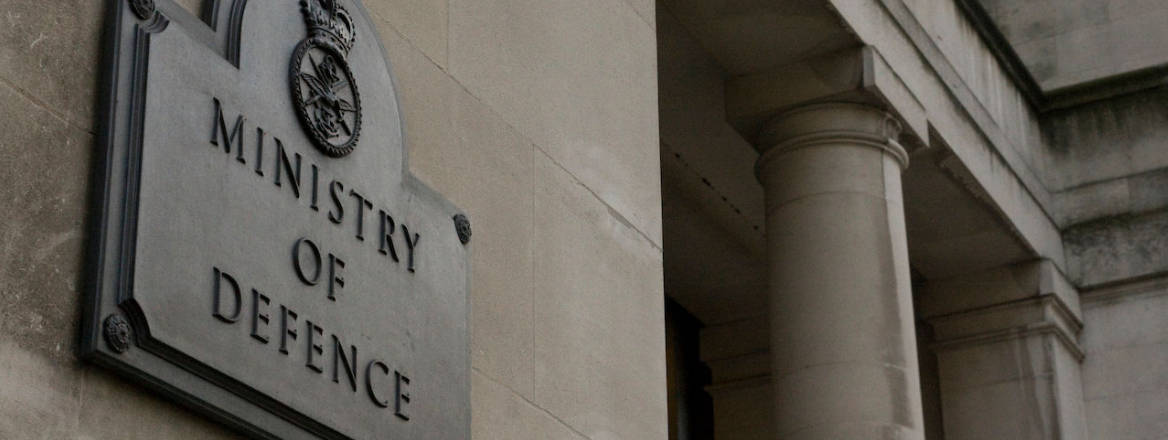Steady as She Goes: The Outcome of the 2015 SDSR
The latest Strategic Defence and Security Review can be best described as being a ‘steady as she goes’ review, providing a welcome element of stability in defence planning after five years of substantial reductions.
The Strategic Defence and Security Review (SDSR) has been published against the backdrop of the terrorist attacks in Paris and the prospect of the UK joining air strikes in Syria. But it is not a response to the events in France, and very few of the capabilities that are being promised will be available within the next year. Rather, concern over the threat of terrorism has combined with increased concern over Russia in the wake of its invasion of Ukraine to make the case for more long term investment in defence and security. If the SDSR had been published immediately after the annexation of Crimea, the tone of the supporting narrative might have been quite different. But the substance of the review – the emphasis on high-quality adaptable forces, able to work closely with allies – would probably have been more or less the same.
The outcome of this SDSR is much better than the armed forces were expecting only six months ago, when further steep capability cuts – similar to those suffered over the last five years - were widely anticipated. But it does not add up to a step change in UK defence capabilities compared with current levels. It is therefore best described as being a ‘steady as she goes’ review, providing a welcome element of stability in defence planning after five years of substantial reductions.
After being cut by 8 per cent in real-terms since 2010, defence spending is now due to rise by around 5 per cent by 2020/21. Service personnel numbers will stabilise at around 145,000, having fallen from 178,000 in 2010. The numbers of front-line aircraft and ships should stabilise at or around current levels, in contrast to the sharp cuts over the last five years. The government will proceed with most of the equipment plans for which it had already made provision – for example restoring the carrier and maritime patrol aircraft capabilities that were lost in 2010, continuing with plans to buy around forty-eight F-35 aircraft over the next decade, and equipping the army for rapid strike.
The government has also made clear that it will go ahead with the construction of four new Trident missile-carrying submarines, the capital cost of which has now risen to £41 billion, making it by far the UK’s most expensive procurement project over the next two decades. It has also confirmed that the first new submarine will not enter service until the early 2030’s, several years later than was estimated in the 2010 SDSR.
A further £11 billion has been invested in the ten-year equipment programme, over and above the 1 per cent annual real growth that was already pencilled into the Ministry of Defence’s (MoD) long-term plans. Much of this money has come from the Treasury’s new Joint Security Fund, which will amount to up to £1.5 billion a year by 2020. This new money has been used to fund the newly announced investments in special forces and drones, as well as cyber and counter-terrorism investments by the security services.
In order to afford these new investments, and in response to cost escalation in long-running programmes, the government has announced some savings in front-line forces, most notably the decision to reduce the planned purchase of Type 26 frigates. Yet the main area in which savings have been made is in the personnel budget. The government has already announced that military pay will only increase by 1 per cent per annum over the next four years, well below projected levels for private sector comparators. Savings are being sought in military service allowances. And the Treasury has insisted on a further 30 per cent cut in the numbers of MoD civilian personnel, following on from the 30 per cent cut that has been made since 2010. One likely consequence of the latter is that some tasks, previously fulfilled by civilians, could be militarised, to some extent reversing the policy direction that has been pursued in recent years.
Because it has been published in advance of the Spending Review, the SDSR is not clear on which decisions have been made on two of the key elements of national security provision – the police and the Foreign Office. Unconfirmed reports suggest that police budgets will be cut sharply (but with counter-terrorist specialists exempted), and that the Foreign Office will also lose out (but with spending on international development protected). The deeper the cuts in these key elements of national security provision, the more pressure there is likely to be for the armed forces to step into the breach – for example in relation to domestic terrorist emergencies.
Over the last five years, the UK has increasingly been seen by its allies – both in the US and in Europe – as a power in retreat, focusing on its domestic political and economic crises at the expense of its international activism. This SDSR, and the stability which it provides, should help to reverse this perception. Over the coming period, outside observers will pay particular attention to the imminent House of Commons vote on Syria, and to the forthcoming national referendum on EU membership. If the prime minister can get what he wants from both votes, then the SDSR will have played an important role in restoring the UK’s reputation as a reliable security partner.
Professor Malcolm Chalmers is Research Director and Director of UK Defence Policy Studies at RUSI.
WRITTEN BY
Malcolm Chalmers
Former Deputy Director General, RUSI


